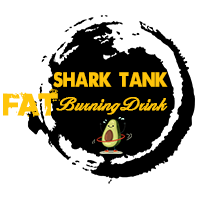
How to Burn Fat in Different Fat-burning Stages?
Fat-burning is no easy task, and it depends on your goals as to how much fat you need to lose to differentiate the different muscle groups and highlight the most important abs. For bodybuilders, this goal can be extreme; however, for the average person, it’s not necessary to lose that much fat to get a healthy, tight, defined “beach body”. For men, at least 4-5% body fat needs to be maintained, while the safe lower line for women is 13-15%.
Recommendations For Different Fat-burning Stages
1. Excessive Obesity Stage
For people who need to lose a very large amount of fat, a combination of methods is necessary. Some people need to lose about 40 pounds of fat before they can consider adding muscle. For this group, the best fat-burning strategy is to find a more realistic plan that can be carried out over the long term.
Strict diets and intense training are not the best options. People with too much fat may experience severe compression of vital organs and joints if they exercise intensely; calorie-restricted diets can lead to weight loss in the early stages, but what is lost is generally water, and it is difficult to stick to them in the later stages because such plans are very strict on overall nutritional balance. For overweight people, we recommend the following modalities:
- Moderate aerobic exercise (walking or cycling) and weight training (12-15 reps per set, gradually increasing intensity as weight loss occurs).
- The gradual elimination of bad fats from the diet and phased reduction of carbohydrate intake.
- Adequate water intake to maintain the feeling of “fullness” to help fat breakdown.
2. General Overweight Stage
This stage is visually overweight, but not to the point of “obesity”, they are typically characterized by about 20 pounds of fat, with a body fat percentage of about 20% for men and about 27% for women.
The best strategy at this stage is to achieve a gradual reduction of fat through a combination of low-intensity exercise and high-intensity exercise, together with a reasonable diet plan. The suggested methods are as follows:
- Moderate aerobic exercise (walking, cycling combined with a rowing machine) and strength training (8-12 repetitions).
- Incorporating occasional high-intensity interval exercise after some initial weight loss.
- Gradually eliminating bad fats from the diet and reducing the carbohydrate intake in stages.
- Consume enough water to keep you feeling “full” to help with fat breakdown.
3. Calming Phase
This stage can be defined as the stage of a small amount of visible fat, about 15% body fat percentage for men and 20% body fat percentage for women, or the last 10 pounds or so away from being “in shape”.
This stage is normal and healthy, but no clear muscle mass can be seen due to the layer of fat. To lose the last of the fat to show the muscle definition, the following methods are recommended:
- Moderate-intensity strength training combined with cardio, and four high-intensity intervals per week.
- Strength training covering all muscle groups with 8-12 repetitions.
- The gradual elimination of bad fats from the diet and phased reduction of carbohydrate intake.
- Varying calorie intake (3 days of low-calorie diet followed by 2 days of high-calorie diet).
- Adequate hydration to maintain a “full” feeling to aid fat breakdown.
4. Forming Phase
For those who are still short of the last 3-4 pounds of fat to lose from a “muscle-ripped” body, high-intensity interval exercise is the best option, as the metabolic rate can be accelerated more effectively during the advanced fat-burning phase. For people who already have a better body and some training experience, high-intensity intervals are perfect because they are an effective way to continue to pull up an already good metabolic rate. It can be done 5 times a week, independent of other forms of exercise. Here are other ways we recommend to help people at this stage burn fat:
- Performing strength training, using 8-12 repetitions of the circuit.
- Gradually eliminating bad fats from the diet and reducing the carbohydrate intake in stages.
- Varying calorie intake (3 days of a low-calorie diet followed by 2 days of a high-calorie diet).
- Adequate hydration to maintain a “full” feeling to aid fat breakdown.
Conclusion
Fat-burning is a healthier goal than losing weight, which can include loss of water and muscle. Maintaining muscle is critical to supporting healthy blood sugar levels, controlling inflammation, and maintaining mobility as we age.
While a standard scale cannot distinguish between weight loss and fat loss, you can increase the likelihood of losing weight in the form of fat by eating plenty of protein and creating a caloric deficit by engaging in more physical activity and reducing your total caloric intake.
